Did you used to have an imaginary friend when you were a child? Do you still?
I asked this question not so long ago in a group of mindfulness and compassion practitioners, and there was laughter in the room in response. A few brave hands went up, but judging by the response, it seemed I had asked a bit of a silly question.
Now this one. Do you ever hear the voice in your head of someone you met in your childhood – maybe the classroom bully, or a mean teacher, a critical parent or a stranger who out of the blue said something unkind that you still remember word for word, all these years later? For some people this may not come so clearly as a voice with words, but as a sinking feeling of ‘I’ll never manage that’, or ‘you see, here I go again’ – but with a similar flavour to what you encountered all those years ago.
Looking at my own experience, there are several voices from the past that pop up on occasion to remind me of my limitations and shortcomings, and who predict a negative outcome. I wouldn’t exactly call these ‘imaginary friends’, but ‘imaginary bullies’ would be quite an accurate term, as the original owners of these voices have long left my life, yet here their message pops up again, unbidden.
Luckily, not only have they become quieter over the years and I usually recognise them quite quickly as unhelpful input, but also, they’re not the only voices! There are many more helpful and encouraging sources, although getting them to come to the foreground took some practice. But wow, what a difference it can make to have some supportive, kind and encouraging voices to lean into! Particularly when in challenging moments or tricky times, it can make all the difference when there’s an inner compassionate friend to turn to. Actual friends are super helpful too, of course, but not always available at 3am in the morning when I wake up with worries, or in unexpected situations where a response is needed pretty much immediately.
We use our imagination all the time, and often unconsciously: imagining the worst scenario, replaying the conversation that didn’t go as we hoped, hearing negative predictions based on those voices from the past. How about accessing some freedom of choice here?
The first thing we can do, is use our mindfulness skills to become aware of these patterns playing out, and bringing our attention back to something neutral in the present moment – the sounds around us, the breath coming and going, the sensations of feet on the ground.
But we can take this one step further and begin to cultivate compassionate imagery that can support and encourage in moments when we need it most. Compassionate imagery has the potential to become a powerful source of kindness that we can access in tricky moments, giving us more resilience. This can take the form of a supportive, compassionate being, but also other forms, such as a place where you feel safe and supported, and free to be completely yourself. Version of the safe place exercise are used in a range of contexts and often reported as highly effective, such as in this research with traumatised refugees. Previous participants of compassion courses with the Mindfulness Association have also found this, like one participant who found that her safe place changed each time and over time. The place became one where the door was left open rather than closed (at first this felt safer), and a place where she felt she had everything she needed, food, warmth, comfort. One of her ‘compassionate beings’ was close by and on hand if needed. This place became a part of her ‘mindfulness toolkit’, and she loved to return here and remember that this safe place was right here within her, during stressful times.
Of course, just imagining is not likely to change our circumstances as if by magic. But whether we are aware of it or not, our imagination does have a direct impact on our emotional wellbeing and our physical nervous system – and with practice we can guide this into a helpful direction. Like Jon Kabat Zinn often says: we can’t stop the waves, but we can learn to surf!


